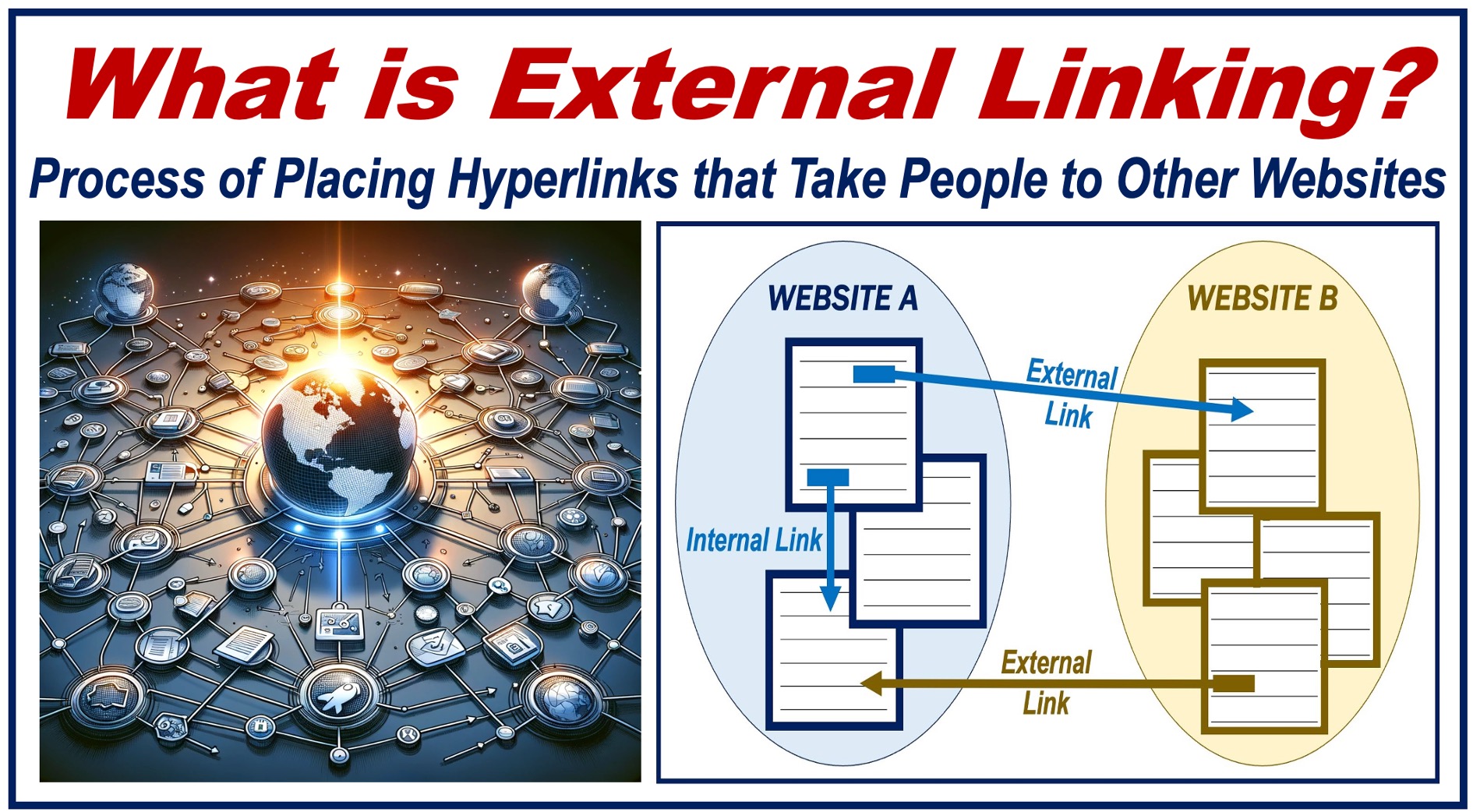What is external linking?
External Linking refers to the placement of hyperlinks (links) in your website that lead to other websites. It is a vital component of search engine optimization (SEO), that is, appearing high up in search results in Google, Yahoo, Yandex, and other search engines.
External linking is the opposite of internal linking, where the links lead to places within the same website.
A link that takes the visitor to another website is an “external link” or “outbound link.”
The website ahrefs.com says the following about external links:
“Also known as an outbound link, an external link is a hyperlink that leads to a page or resource outside a particular website. It is the opposite of an internal link, which links to URLs within the same domain. Backlinks or inbound links are sometimes called external incoming links.”
Importance of external linking
External linking is critical for many reasons, such as:
-
SEO Benefits
External links, particularly from high-authority sites, may significantly improve your website’s search engine rankings. They give your website credibility and relevance.
-
Resource Value
They give additional value to readers by directing them to supplementary information or resources.
-
Building relationships
Linking to other websites may help you connect with other businesses and thought leaders in your industry.

Best Practices
The following are some of the best practices for external linking:
-
Relevance and Quality
Make sure that the content that is linked is relevant and adds value to your audience.
-
Trustworthy Sources
Choosing links from reputable websites will enhance credibility.
-
Balance
It is crucial to maintain a balance between external and internal links to maximize the user experience and SEO.
-
Using ‘NoFollow’ Tags
In certain cases, using ‘NoFollow’ tags on external links can be beneficial, especially when linking to less credible sources.
Mistakes
You should avoid making the following mistakes:
-
Linking to Low-Quality Sites
Links to spammy or low-quality websites could negatively impact your site’s SEO and credibility.
-
Excessive Linking
When a page is overloaded with external links, it can detract from the user experience and may be viewed negatively by search engines. You don’t want your webpages lit up like a Christmas tree!
-
Broken Links
Don’t forget to regularly check for and fix broken external links, since they can negatively impact the user experience and site performance. A broken link is a hyperlink that leads to a non-existent or inaccessible page on the internet, that is, a link that no longer works.
Tools and Techniques for external linking
There are several tools that can help manage external links. Ahrefs or Mom can help you identify high-quality sites for external linking and monitor the health of existing links.
The Future
As search engine algorithms evolve, the strategy of external linking may change. The focus is expected to remain on quality, relevancy, and the overall impact of external connections on user experience and information sharing.
Two Videos
These two educational videos come from our sister channel on YouTube – Marketing Business Network. Using easy-to-understand vocabulary and examples, they explain what “Hyperlink” and “SEO” mean.
-
What is a Hyperlink?
-
What is Search Engine Optimization (SEO)?
Written by Nicolas Perez Diaz

